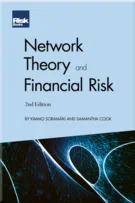Digitisation and Automation in Commercial Lending: Disruption without Distraction
Elaine Wong
Foreword
Introduction
An Exploration of the Evolution of Risk: Past, Present and Future
Risk Trading, Risky Debt and Financial Stability
Skating on Thinner Ice: A Macroeconomic Outlook at the End of the Credit Cycle
Climate Change: Managing a New Financial Risk
The Quest to Save Risk-Weighted Assets
The Evolution of the CLO Market since the Global Financial Crisis and a Valuation Approach for CLO Tranches
Homo Ex Machina: Finance Rebooted
Innovation and Digitisation in Credit: A Global Perspective
The Lending Revolution: How Digital Credit Is Changing Banks from the Inside
Digital Lending in Asia: Disruption and Continuity
Digitisation and Automation in Commercial Lending: Disruption without Distraction
Credit Risk Management in the Era of Big Data: From Measurement to Insight
Artificial Intelligence and Machine Learning in Credit Risk Analytics: Present, Past and Future
Integrated Loan Portfolio Modelling and Risk Management
The Role of Banks in Illiquid Credit Markets, and the Disruption and Evolution of Credit Portfolio Management
Epilogue
Automation and data-driven analytics have become part of our daily lives. Banking is no different. For example, a credit card application can be approved within minutes, and even a mortgage application can be pre-approved within a few days. With the growing influence of fintech on retail banking platforms, the banking sector worldwide benefits from data-driven analytics and credit-decision automation for money transfers, payment services and product recommendations to enhance customer relationships. Interestingly, however, we have seen few breakthroughs in commercial and corporate lending, which have remained largely unchanged by the technological advances since the early 2000s.
The technology lag within commercial lending stems from fundamental differences in the nature of commercial and consumer credit. Consumers are both far more numerous than companies and, by and large, financially simpler, with financial characteristics easily categorised and quantified. It is therefore no surprise that consumer credit data has long been highly standardised and readily available in machine-readable form. Commercial financial data, on the other hand, has heretofore been collected largely
Copyright Infopro Digital Limited. All rights reserved.
As outlined in our terms and conditions, https://www.infopro-digital.com/terms-and-conditions/subscriptions/ (point 2.4), printing is limited to a single copy.
If you would like to purchase additional rights please email info@risk.net
Copyright Infopro Digital Limited. All rights reserved.
You may share this content using our article tools. As outlined in our terms and conditions, https://www.infopro-digital.com/terms-and-conditions/subscriptions/ (clause 2.4), an Authorised User may only make one copy of the materials for their own personal use. You must also comply with the restrictions in clause 2.5.
If you would like to purchase additional rights please email info@risk.net









